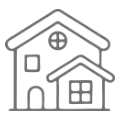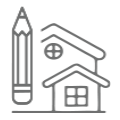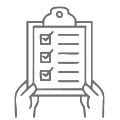Dubai’s business landscape is a beacon of innovation and opportunity. For any company, from a lean startup to a sprawling multinational, the office space is far more than just a physical location; it’s a strategic asset. A well-designed office in Dubai can enhance productivity, reflect brand identity, attract top talent, and foster a thriving company culture. This makes investing in professional office interior design not just a choice, but a necessity for success in this competitive market.
However, the question that often surfaces first for businesses embarking on this journey is, “What’s the actual cost?” The financial aspect of office interior design in Dubai is multi-layered, encompassing everything from initial conceptualization to the final fit-out and furnishing. This deep dive aims to demystify these costs for 2025, providing a clear breakdown of what to expect and how to budget effectively for your ideal workspace.
Beyond the Aesthetics: The ROI of Thoughtful Office Design
Before delving into numbers, it’s crucial to acknowledge that a well-executed office design yields significant returns:
- Increased Productivity: Ergonomic workstations, optimized layouts, and effective lighting contribute directly to employee efficiency and focus.
- Enhanced Brand Perception: Your office space is a physical manifestation of your brand’s values, professionalism, and ambition to clients, partners, and employees.
- Talent Attraction & Retention: Modern, inspiring, and comfortable workspaces are a powerful draw for skilled professionals in Dubai’s competitive talent market.
- Operational Efficiency: Smart space planning can streamline workflows, reduce wasted space, and improve internal communication, leading to cost savings in the long run.
- Employee Well-being: Thoughtful design incorporating elements like natural light, biophilia, and breakout zones can significantly boost morale and reduce stress.
- Compliance: Professional designers ensure your space adheres to all local building codes, health, safety, and accessibility regulations, avoiding costly penalties.
Key Cost Components of Office Interior Design in Dubai
The total expenditure for your new or refurbished office space will be a sum of several distinct categories:
1. Design & Consultancy Fees: The Visionaries’ Charge
This is the investment in the creative expertise, strategic thinking, and technical drawings provided by the interior design firm. Fees vary based on the firm’s reputation, experience, and the project’s complexity.
- Pricing Models (2025 Estimates):
- Per Square Meter (or Foot): A common method, especially for well-defined scopes. Expect AED 100 to AED 500+ per sq. meter (approx. AED 9.30 to AED 46.50+ per sq. ft.) for design services. Higher-end firms and more intricate designs will be at the top of this range.
- Percentage of Total Project Cost: For comprehensive projects, designers might charge 10% to 20% of the total fit-out and FF&E (Furniture, Fixtures, and Equipment) budget. This aligns the design fee with the overall scale.
- Flat Fee: For smaller, clearly defined projects (e.g., a specific area renovation), a fixed fee might be quoted, ranging from AED 10,000 to AED 50,000+.
- Hourly Rates: Used for consultations, specific tasks, or minor adjustments. Rates typically range from AED 150 to AED 500 per hour.
- What Design Fees Cover:
- Initial conceptualization, mood boards, and feasibility studies.
- Detailed space planning, furniture layouts, and workflow optimization.
- 3D renderings, virtual walkthroughs, and presentation materials.
- Selection and specification of all finishes, materials, and color palettes.
- Comprehensive lighting design and fixture selection.
- Custom joinery and millwork design.
- Detailed technical drawings (MEP points, elevations, sections) for contractors.
- Project management, site supervision, and coordination with other consultants (e.g., structural engineers, specialized IT).
2. Fit-Out Works: The Physical Build-Out
This is typically the largest financial component, covering the actual construction, installation, and infrastructure. The starting condition of your space significantly impacts this cost.
- Starting Condition Impacts Cost:
- Shell & Core: A bare concrete space (no walls, no ceiling, no flooring, minimal MEP points). This requires the most extensive and thus most expensive fit-out.
- Category A Fit-Out: Provides a basic functional space with raised floors, suspended ceilings, basic lighting, and HVAC distribution. You’ll add partitions, finishes, and furniture.
- Category B Fit-Out: A more complete space with partitions, finished floors, ceilings, and sometimes basic amenities. Your focus is on specific finishes, branding, and FF&E.
- Average Cost Per Square Meter (2025 Estimates for full fit-out from Shell & Core):
- Basic/Standard Office: AED 900 – AED 1,600 per sq. meter (approx. AED 83 – AED 149 per sq. ft.)
- Includes: Basic gypsum partitions, standard flooring (e.g., vinyl, basic carpet tiles), painted walls, standard suspended ceiling, basic MEP (power points, lighting, AC ducts).
- Mid-Range Office: AED 1,600 – AED 2,800 per sq. meter (approx. AED 149 – AED 260 per sq. ft.)
- Includes: Higher quality partitions (e.g., some glass partitions), upgraded flooring (e.g., porcelain tiles, better quality carpet), textured wall finishes, custom ceiling details, more sophisticated lighting, and optimized MEP systems.
- High-End/Luxury Office: AED 2,800 – AED 5,500+ per sq. meter (approx. AED 260 – AED 510+ per sq. ft.)
- Includes: Extensive use of glass partitions, premium imported materials (e.g., natural stone, bespoke timber), custom joinery, advanced acoustic solutions, smart lighting controls, specialized IT infrastructure, and complex MEP requirements for server rooms, data centers, etc.
- Basic/Standard Office: AED 900 – AED 1,600 per sq. meter (approx. AED 83 – AED 149 per sq. ft.)
- Key Fit-Out Components & Their Proportional Costs:
- Civil Works (Partitions, Ceilings, Flooring): Often 25-35% of fit-out cost.
- MEP (Mechanical, Electrical, Plumbing): A crucial and substantial component, typically 25-40% of the fit-out cost. This includes:
- HVAC (Air Conditioning & Ventilation): Essential in Dubai.
- Electrical: Wiring, power outlets, data points, lighting circuits, distribution boards.
- Plumbing: For pantries, washrooms, and any specialized equipment.
- Fire & Safety Systems: Sprinklers, smoke detectors, emergency lighting, fire alarm integration – non-negotiable and heavily regulated.
- Finishes & Wall Treatments: 10-20% of fit-out cost.
- Custom Joinery & Millwork: 10-20% of fit-out cost (highly variable depending on customization level).
- Doors & Hardware: 5-10% of fit-out cost.
3. Furniture, Fixtures, and Equipment (FF&E): The Furnishing Touch
This category covers everything that’s not structurally built-in. It’s highly flexible and directly reflects your brand image and budget.
- Cost Expectation: FF&E can range from 15% to 35% of the total project budget. For executive offices with bespoke pieces or specialized tech-integrated furniture, this percentage can climb higher.
- Key FF&E Elements:
- Office Furniture: Desks (ergonomic, standing), chairs (task, executive, meeting), storage units, filing cabinets.
- Collaborative Furniture: Meeting tables, soft seating for breakout zones, modular workstations.
- Reception Area: Custom reception desks, visitor seating, coffee tables.
- Pantry/Cafeteria: Tables, chairs, kitchen appliances.
- Lighting Fixtures: Decorative pendants, task lighting, architectural lighting (beyond basic MEP lighting).
- Technology & AV: Projectors, screens, video conferencing systems, sound systems, smart office devices.
- Soft Furnishings & Decor: Rugs, curtains/blinds, artwork, plants, decorative accessories.
- Signage & Branding: Internal logos, wayfinding signage, wall graphics.
4. Permits, Approvals, and Contingency: The Regulatory & Buffer Zone
Navigating Dubai’s robust regulatory environment is critical. While your chosen designer or fit-out contractor will manage this, the associated fees are part of your budget.
- Permits & Approvals (2025 Estimates):
- Dubai Municipality (DM) Approval: For architectural, structural, and MEP drawings. Fees vary based on project type and area, but can range from AED 100-250 per sq. meter (especially for larger commercial projects, plus additional impact fees).
- Dubai Civil Defense (DCD) Approval: Essential for fire and life safety systems. Fees vary based on size and complexity, but can be a few thousand AED to AED 10,000+.
- DEWA (Dubai Electricity and Water Authority) Approval: For power and water connections/modifications. Connection charges can vary significantly based on load requirements.
- Free Zone Authority Approvals: If in a free zone (e.g., TECOM, DMCC, DDA, JAFZA), additional NOCs and permits from the relevant authority are required, each with associated fees (can range from a few hundred to several thousand AED per permit).
- Building Management/Landlord Approvals: Your landlord will have specific guidelines and potentially charges for fit-out work.
- Estimated Total Permit Fees: Can range from 3% to 5% of the total fit-out cost, but this can vary.
- Project Management Fees: Often integrated into the fit-out contractor’s quote for turnkey solutions, but if hired separately, can be 5-10% of the construction cost.
- Contingency Fund: Absolutely essential! Always allocate 10% to 15% of your total estimated project budget as a contingency. This buffer accounts for unforeseen site conditions, unexpected material cost fluctuations, minor design changes during construction, or regulatory adjustments. Ignoring this can lead to budget overruns and project delays.
How to Budget Effectively for Your Office Interior Design in Dubai
- Define Your Scope Clearly: Before approaching designers, have a precise vision of your needs:
- What’s your headcount (current & projected)?
- What departments do you have? Do they need private offices, open-plan, or hybrid?
- What’s your brand identity?
- What level of quality/luxury are you aiming for (basic, mid-range, premium)?
- What is your non-negotiable wishlist vs. nice-to-haves?
- Establish a Realistic Budget Range: Based on the square meter estimates above and your desired quality, set a realistic budget before getting quotes. This helps designers tailor their proposals.
- Seek Detailed, Itemized Quotes: Don’t settle for lump-sum figures. Request comprehensive proposals from at least 3-4 reputable firms. Ensure their quotes clearly break down:
- Design fees and what they include.
- Fit-out costs by category (civil, MEP, finishes, joinery).
- FF&E costs (either as a percentage or itemized).
- Permit handling and estimated permit fees.
- Payment milestones.
- Consider Turnkey Solutions: Many design and build firms in Dubai offer comprehensive turnkey services, managing both design and fit-out. This can streamline the process, ensure better cost control, and reduce coordination headaches.
- Prioritize & Value Engineer: Work with your designer to identify areas where you can optimize costs without compromising core functionality or brand image. Can a certain material be substituted? Is a custom piece truly necessary over a high-quality, ready-made option?
- Don’t Compromise on Compliance: Budget adequately for all permits and ensure your chosen partner is well-versed in Dubai’s regulations. Non-compliance leads to significant delays and penalties.
- Factor in “Soft Costs”: Remember costs beyond the fit-out, such as IT setup, moving costs, initial deep cleaning, and potential temporary office space if your operations are disrupted.
In essence, investing in office interior design in Dubai is about creating an environment that champions your business goals. By understanding the detailed cost components and approaching the budgeting process strategically, you can transform your workspace into a powerful asset that supports growth, attracts talent, and embodies your brand’s success.





